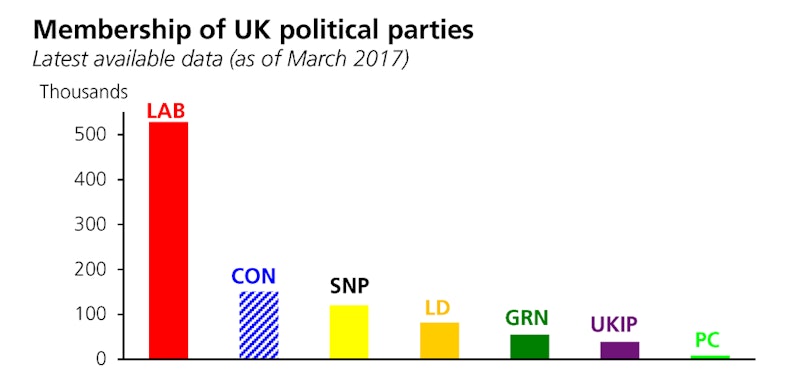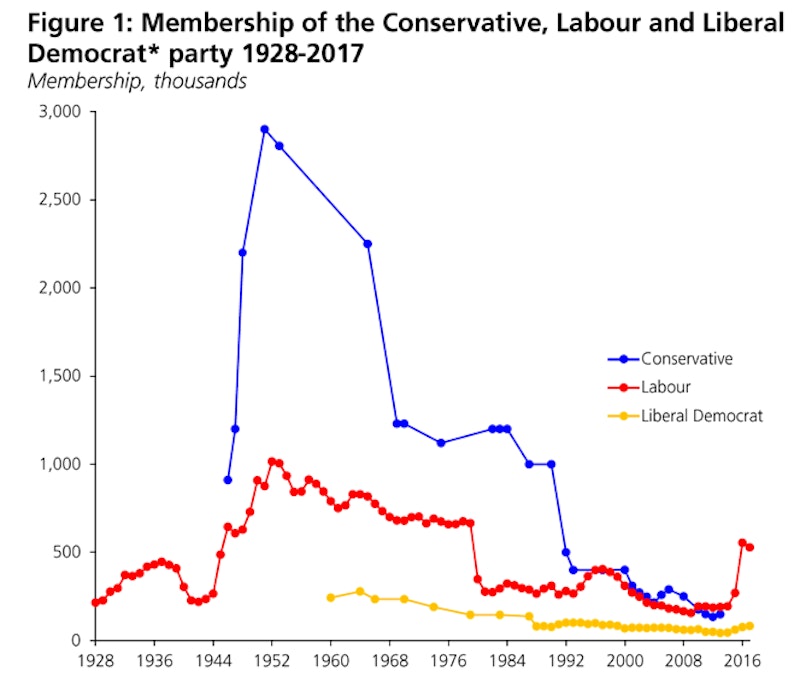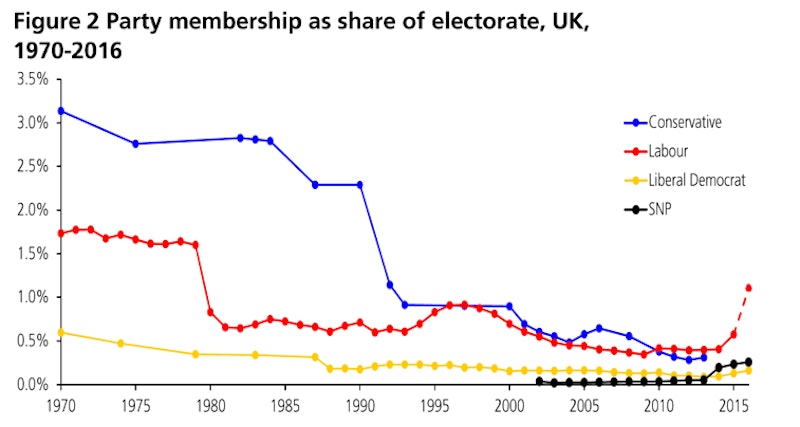Study Notes
Participation - Political Party Membership in the UK
- Level:
- AS, A-Level, IB
- Board:
- AQA, Edexcel
Last updated 27 Aug 2017
Party membership is one way of measuring participation in the political process.
Passive and Active Membership
Simply being a member of a political party does not, of course, mean than a member is an active participant in political party actions.
A passive party member is a supporter but does not get involved in the day-to-day activities of a party. A passive member may simply have joined to show financial and moral support for the party, or to become eligibly to participate in a leadership election.
An active party member is likely to get involved in a much wider range of party activities, not just at elections. He or she might attend regular party meetings, campaign and canvass in the local community, or be a vocal supporter of the party using social media.
Trends in UK Party Membership
The first point to note is that political parties In the UK are under no legal obligation to publish membership statistics. There is no uniformly recognised definition of membership, nor is there an established method or body to monitor it. Three source types - figures voluntarily included in financial submissions to the Electoral Commission, party press releases and media estimates are the most widely-used, but even these can quickly become out-of-date.
The data used below comes from a recent House of Commons Library report on Membership of Political Parties (March 2017
Membership by Party
As the chart below indicates, the Labour Party has the largest party membership, currently just over 500,000. Of these around 300,000 are "full members" with the balance made up by affiliated supporters and registered supporters. Labour Party membership was boosted significantly when Ed Miliband introduced a “one member, one vote” system and allowed registered supporters of the party to sign up and vote for £3.
Conservative Party membership reached a high of just under 3 million in 1953 and even in the 1990s the Conservatives had the largest membership. However since then Conservative Party membership has been in rapid decline. When David Cameron became Leader of the Conservative Party in 2005 there were 258,239 members of the Party. By the beginning of 2010 membership had fallen to 177,000. In the three years from 2010 to 2012 membership fell a further 44,000 to 133,000.
Scottish National Party membership is now consistently over 100,000. This number doubled during the period immediately before, and after the Scottish Independence referendum.
Liberal Democrat Party membership since the party was formed in 1988 has remained between 50,000 - 80,000.


Party Membership as a Percentage of the Electorate
One measure of party participation is to measure the percentage of the electorate who are members of a party.
In summer 2016 approximately 1.6% of the electorate was a member of either the Conservative, Labour or the Liberal Democrat parties. This is a rise compared to 2013, when membership of these three parties reached a historic low of around 0.8%. In contrast, in 1983 around 3.8% of the electorate were a member of the Conservative, Labour or Liberal Democrat parties.

You might also like
Digital democracy: E-petitions
Study Notes
Compulsory Voting
Study Notes
General Election Turnout "Higher Lower" Activity
Quizzes & Activities
Participation - Connection Wall Activity
Quizzes & Activities
The Participation Crisis in UK Politics
24th January 2025